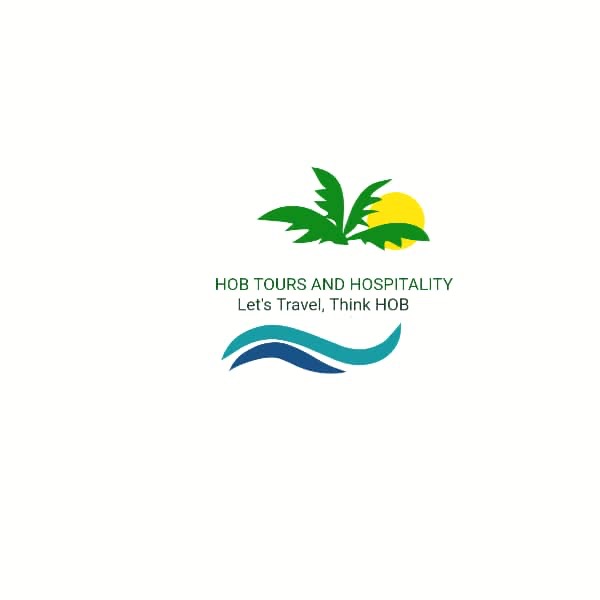Unveiling the Enigmatic Traditions of the Voodoo Festival in Benin: A Journey of Intrigue and Wonder
- House of Benny

- Mar 20
- 4 min read
The Voodoo Festival, celebrated annually in Benin, is a vibrant spectacle that draws thousands of visitors from around the globe. This festival, deeply rooted in the traditions and beliefs of the local people, offers unique insights into the complex world of Voodoo spirituality. With an array of colorful rituals, energetic dances, and profound symbolic expressions, the festival serves as a captivating gateway into a culture often shrouded in mystery.
As we embark on a journey to explore the enchanting essence of the Voodoo Festival in Benin, we shall delve into its history, significance, and the myriad experiences this extraordinary event offers.
The Origins of Voodoo in Benin
Voodoo, or Vodun as it is locally known, originates from the Fon and Ewe people of West Africa, particularly in Benin. Tracing its roots back centuries, Voodoo encompasses more than just spiritual practices; it reflects the rich history and culture of the people.
Traditionally, Voodoo is about harmony with nature, communication with ancestors, and the reverence of various deities or spirits known as "Loa." While many people in the Western world associate Voodoo with superstition, in Benin, it constitutes a respected religion that plays a vital role in daily life.
The Voodoo Festival, held every January 10th, commemorates the creation of the Vodun religion and the spirit of unity among practitioners.
The Festival Atmosphere
The atmosphere during the Voodoo Festival is electric, filled with the beats of drums, the energy of dancers, and the vibrant colors of traditional garments. Participants often dress in intricate costumes adorned with symbols that represent various Loa, showcasing the diversity and complexity of Voodoo worship.
The heart of the festival is the main event held in the city of Ouidah, a historic hub known for its deep Voodoo roots. As visitors flood the streets, one can witness the local community engaging in rituals, performances, and ceremonies filled with song and dance.

Voodoo Rituals and Ceremonies
Central to the festival are myriad rituals and ceremonies, each performed with significance and reverence. From animal sacrifices to offerings of food and drinks, each act is intended to honor the spirits and seek their blessings.
As drums beat rhythmically, dancers enter a trance, channeling the power of the Loa. This intense experience captivates participants and spectators alike, creating an atmosphere steeped in spirituality and cultural expression. The rituals serve as a powerful reminder of the interconnectedness of life, nature, and the divine.
Many ceremonies also include the consultation of priests or priestesses, known as "Houngans" and "Mambos," who serve as intermediaries between the human world and the Loa. They provide guidance for individuals seeking spiritual insight or looking to resolve personal issues.
Cultural Significance of the Festival
The Voodoo Festival is more than just a celebration; it is a profound commentary on identity, spirituality, and community. For the people of Benin, it is a day of pride, uniting personas of various backgrounds, cultures, and beliefs under a common spiritual heritage.
The festival also plays a significant role in reinforcing cultural preservation. As the world becomes increasingly globalized, events like the Voodoo Festival remind local populations of their roots, encouraging younger generations to embrace and respect their ancestry. By showcasing these unique practices to a global audience, the festival fosters dialogue and understanding about Voodoo's true essence.
Experiences and Attractions
For visitors attending the Voodoo Festival, the experience extends beyond the immediate festivities. Numerous cultural attractions and experiences are available, enabling a deeper understanding of Voodoo traditions.
One popular location is the Temple of the Python, situated in Ouidah, which serves as a sacred site for Voodoo practitioners. Here, visitors can witness rituals and learn about the symbolic significance of the python, revered in Voodoo culture as a powerful protector spirit.
The festival's vibrancy often spills over into local markets, where artisans offer handmade crafts, jewelry, and textiles that celebrate the Voodoo culture. Visitors can take home unique souvenirs that embody the spirit of their journey.
Participating in the Voodoo Festival
For those contemplating attending the Voodoo Festival, it is essential to respect the local traditions and customs. It is advisable to familiarize oneself with the festival's significance to appreciate the rituals fully.
Staying with local guides can enhance the experience, offering insights into the meaning behind each ritual and the cultural context. Moreover, engaging with local communities will foster connections and foster mutual respect between visitors and practitioners.
Respect is paramount. The vibrant community is welcoming, but understanding the spirituality inherent in the ceremonies is essential for an enriching experience.
Conclusion
The Voodoo Festival in Benin is a mesmerizing celebration of culture, spirituality, and community, enveloped in tradition and history. As participants immerse themselves in the colorful atmosphere and engage in profound rituals, they are invited to explore the layers of meaning embedded in the Voodoo faith.
This journey not only fosters understanding and connection between cultures but also allows for personal reflection and spiritual insight. Whether drawn by the allure of sacred practices or the rhythmic dance of celebration, visitors leave the festival with lasting memories of intrigue and wonder that will resonate long after the festivities conclude.
Through exploring the magic of the Voodoo Festival, we can appreciate the rich tapestry of human expression and the diverse ways people connect with the world around them. Embracing these traditions and learning from them is a pathway to a deeper understanding of our own spiritual narratives.
As the festival concludes each year, the echoes of drums and the vibrancy of colors etch themselves into the hearts of all who witness, reminding us of the beauty in our differences and the shared human experience.




Comments